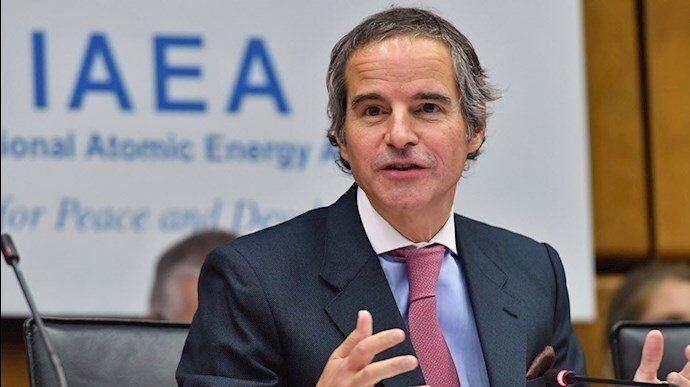(MENAFN- Trend News Agency) BAKU, Azerbaijan, June 5. The process of
implementing joint statement between the International Atomic
Energy Agency (IAEA) and Iran on the resolution of control issues
has begun, and progress has been made in this direction, Director
General of the IAEA, Rafael Grossi said at the meeting of the Board
of Directors of the agency on June 5, trend reports.
“In early May, the IAEA installed surveillance cameras at
facilities producing centrifuge supplies in Iran. In addition, the
agency has installed enrichment control equipment at the Fordow
Fuel Enrichment Plant, as well as equipment at the Natanz Fuel
Enrichment Laboratory, to monitor the levels of Iranian-declared
enriched uranium at the facilities,” Grossi said.
He added that these steps help to identify any changes in
uranium enrichment rates at the mentioned facilities more
quickly.
The director general also pointed out that the progress achieved
was not at the expected level. It must be a continuous process that
all the commitments currently published in the joint statement come
to fruition without delay.
Regarding the progress in the matter related to the discovery of
nuclear particles in undeclared places in Iran, Grossi said that
Iran has provided an explanation about the possibility of the
presence of low levels of uranium in Marivan.
"Our assessment of this place is still valid. I repeat that the
issues raised regarding Iran's obligations in the comprehensive
monitoring agreement between Iran and the IAEA are monitoring
issues and these issues must be resolved so that the IAEA can stand
in a position to guarantee that Iran's nuclear program is of a
peaceful nature,” he noted.
On May 30, 2023, informed sources in Iran announced that Iran
and IAEA have agreed on two issues. The issue raised by the IAEA
regarding the Abadeh nuclear facility in Fars province in the south
of Iran, as well as the issue about the discovery of 83.7 percent
enriched uranium remains in Iran, have already been resolved.
In January 2016, JCPOA was launched between Iran and the P5+1
group (US, Russia, China, UK, France, and Germany) in connection
with Iran's nuclear program. In May 2018, the US announced its
withdrawal from the deal and imposed sanctions on Iran in November
of the same year. To preserve the agreements reached as part of the
JCPOA, the European signatories of the deal started in January 2019
that a financial mechanism for maintaining trade with Iran called
INSTEX was formed.
On May 8, 2019, Iran announced that it had ceased fulfilling its
commitments regarding the sale of over 300 kilograms of uranium, as
stated in the deal, basing its decision on the other signatories
that have not fulfilled their obligations. On July 7, Iran
announced that it will not be fulfilling its commitments regarding
the enrichment of uranium at 3.67 percent and the reconstruction of
the Arak Heavy Water Reactor Facility as stated in the deal.
Iran announced that it will enrich uranium using next-generation
centrifuges and will not mix it with the enriched uranium residues
as part of the third step of reducing commitments in JCPOA on
Sept.5. On Nov. 5, 2019, Iran announced that it took the fourth
step in connection with reducing its commitments to the nuclear
agreement. So, uranium gas is being pumped to the centrifuges at
the Fordow Fuel Enrichment Plant.
On Jan.2020, Iran took the last fifth step in reducing the
number of its commitments within JCPOA.
---
Follow the author on Twitter: @baghishovelnur




















Comments
No comment